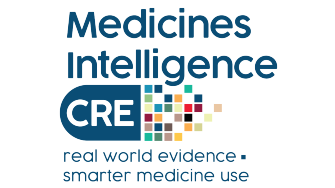
Initiation and long-term use of opioids after hospitalisation
Project Incubator Program
Project Incubator Program

Australia has looked on with concern at the widespread harm from prescription opioid painkillers in the US. Until recently, Australian use of prescription opioids such as oxycodone was increasing, and with it worries about addiction, overdose and other problems. Many people are prescribed these medicines after a visit to hospital and research in Australia and elsewhere has suggested that these individuals can go on to long-term and potentially problematic use. This project aims to generate robust and actionable information about the prevalence and natural history of prescription opioid use initiated during or soon after a hospital visit in Australia, focusing on persistent or long-term use and its harms.
Jun - Dec 2023
Ms Chrianna Bharat - UNSW Sydney
Ms Ximena Camacho - UNSW Sydney
Ms Kendal Chidwick - UNSW Sydney
Prof David Currow - University of Wollongong
Prof Louisa Degenhardt - UNSW Sydney
A/Prof Natasa Gisev - UNSW Sydney
Prof Sallie Pearson - UNSW Sydney
What is the prevalence and natural history of opioid use initiated during hospital stay or post-discharge in New South Wales, particularly the prevalence of persistent opioid use?
We will use population-based, linked administrative health data from the Medicines Intelligence Data Platform, comprising Pharmaceutical Benefit Scheme (PBS), Medicare Benefit Schedule (MBS), National Death Index (NDI)/Cause-of-death Unit Record File (CODURF), NSW Admitted Patient Data Collection (APDC), NSW Emergency Department Data Collection (EDDC), and NSW Clinical Cancer Registry (CCR) for all adult residents of NSW from 2002-2021.
Evidence from this study can help inform the type of interventions and their timing to reduce the risks associated with opioids initiated during hospital stay or at discharge
The research paper with results from our study appeared in the British Journal of Clinical Pharmacology on 27 May 2024. The work has also been presented in several forums including the 2023 MI-CRE Annual Research Symposium and a National Drug and Alcohol Research Centre online seminar on 11 April 2024, with over 200 registered participants from the wider drug and alcohol community and an international panellist, Jay Gong from the University of Auckland. The research has also been accepted to present to an international audience at the International Society for Pharmacoepidemiology annual conference in Berlin in August 2024.
The research also generated stories in trade and general media, including The Courier Mail, PharmaDispatch, The Limbic and Australian Journal of Pharmacy.
The published paper will also be shared with our contacts at TGA, DUSC and ACSQHC to inform future policy in the area.